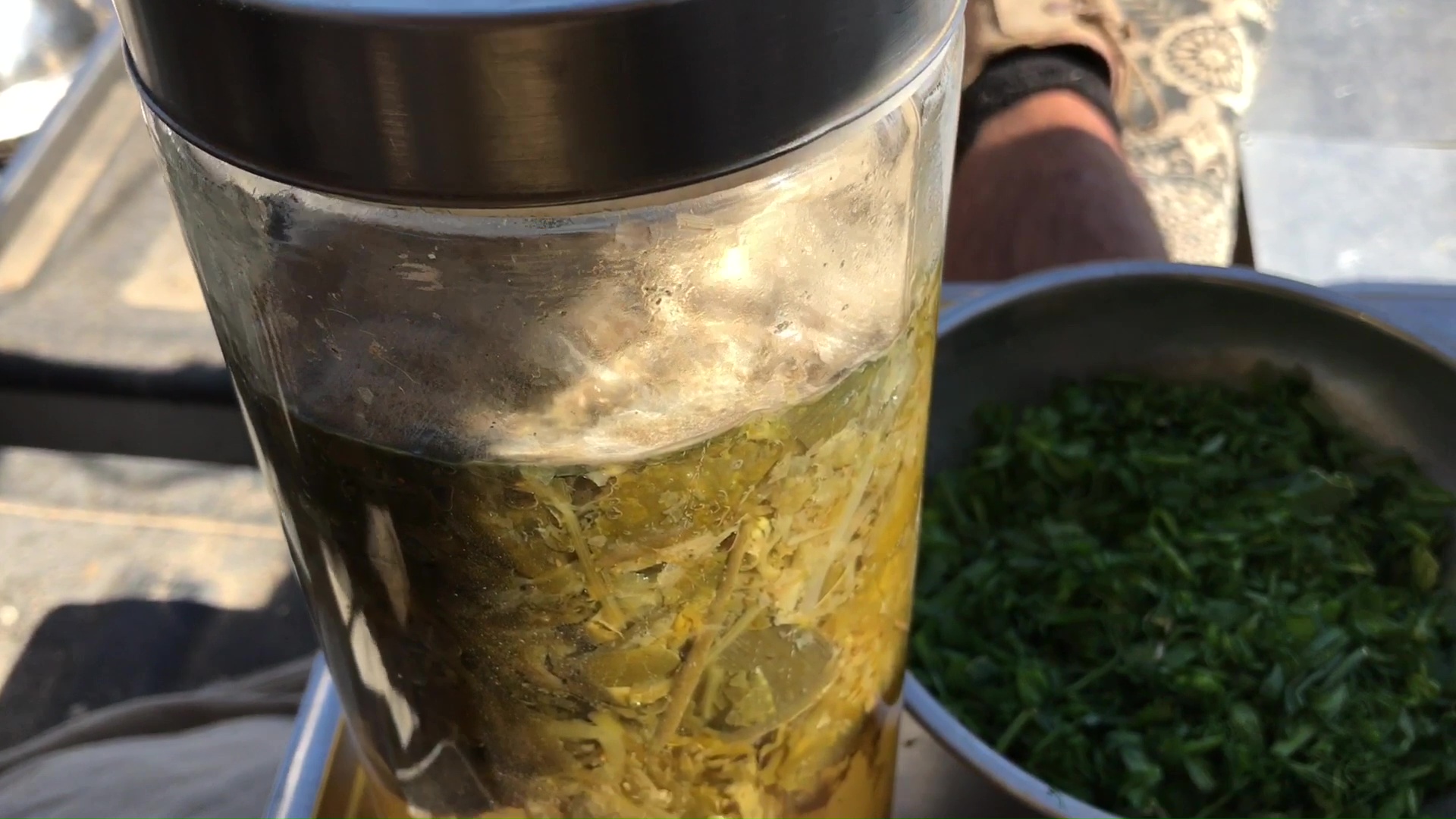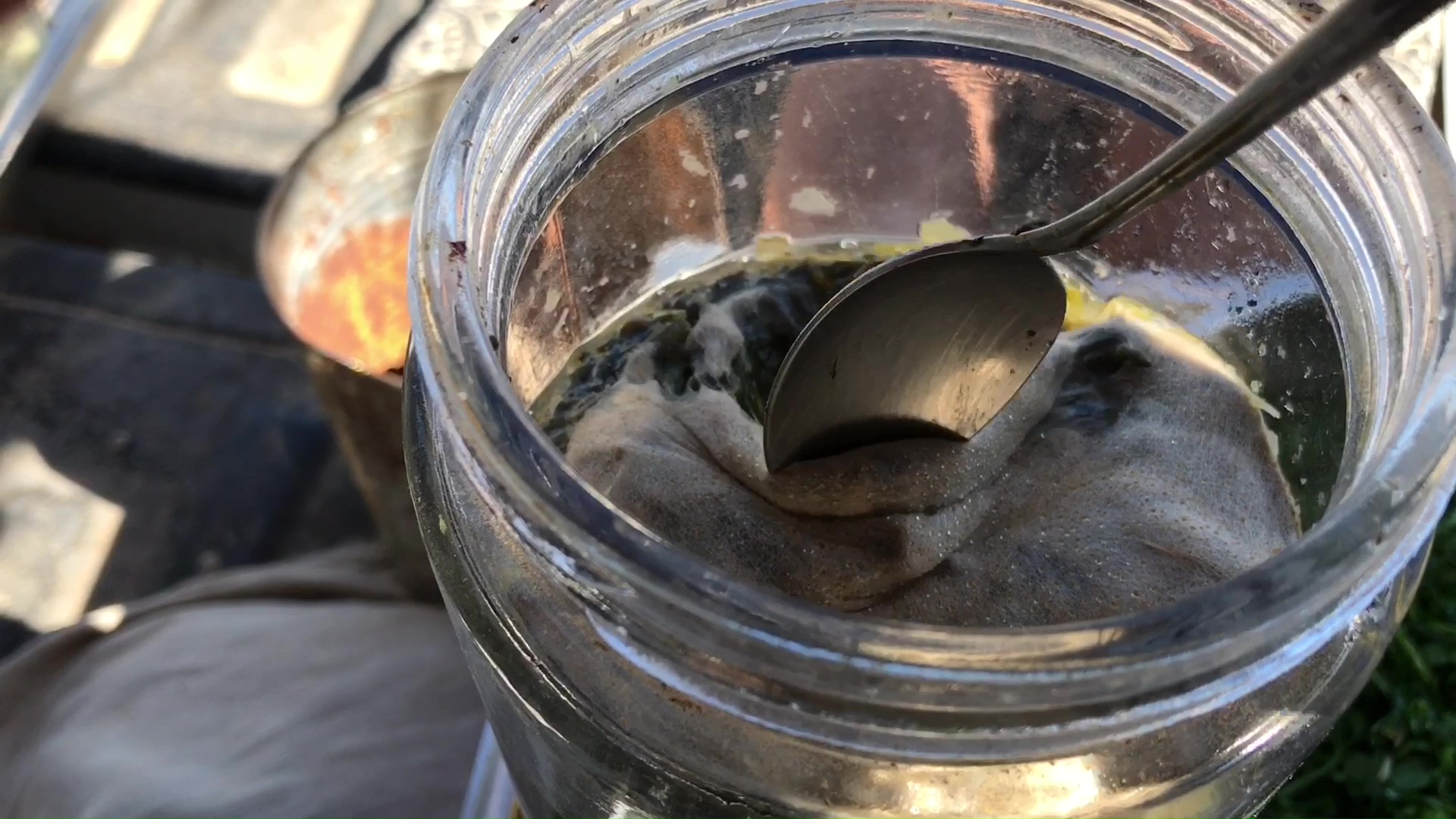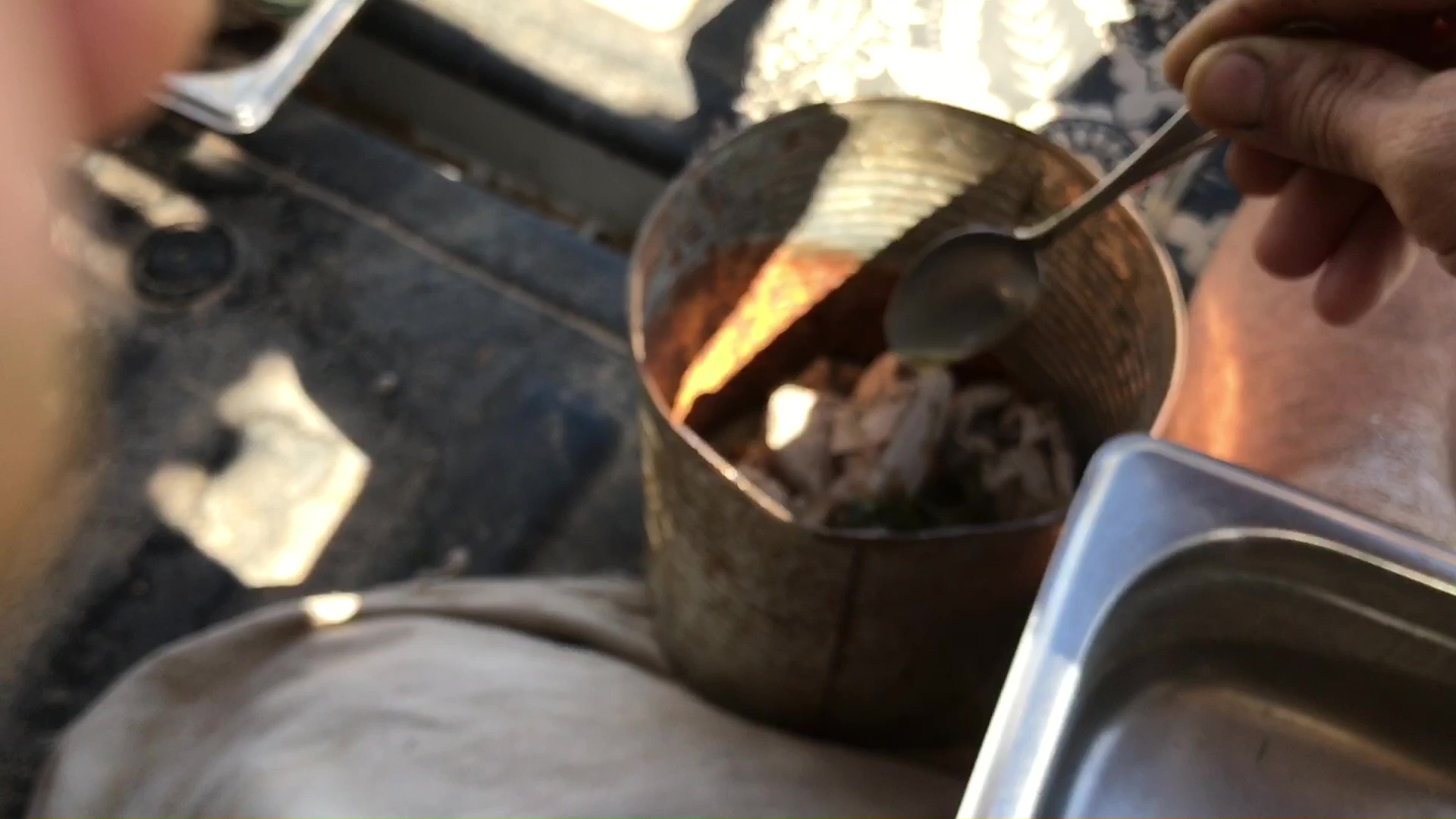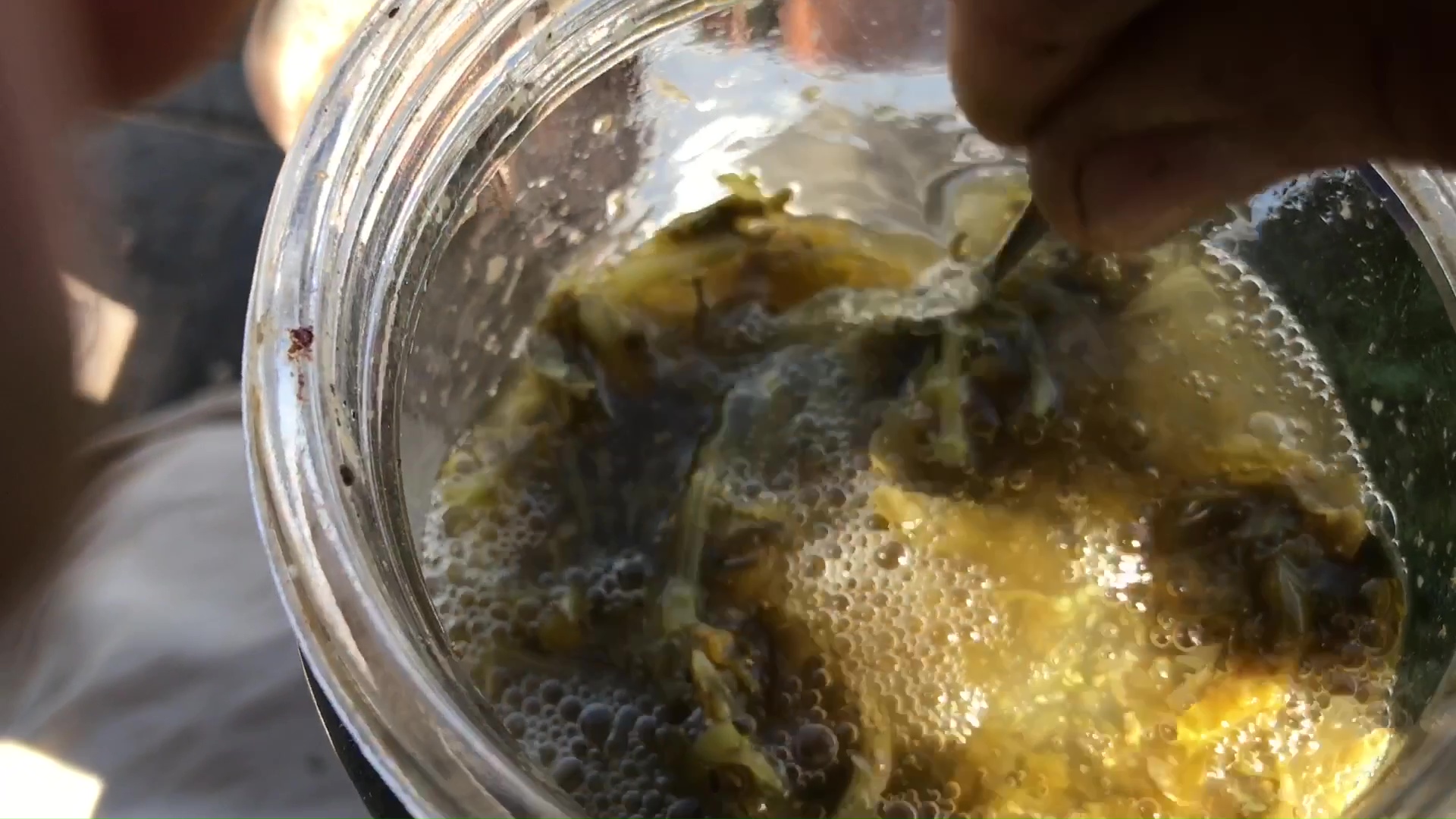
01 Mold Growing On Top Of Kimchi Salt Brine Wild Fermentation Jar

02 Scraping Layer Of Mold Off The Top Of A Kimchi Wild Salt Brine Fermentation Jar

03 Composting Salt Brine Fermentation Jar Mold

04 Stirring Fermentation Jar After Mold Layer Removal
Scraping Mold Off The Top Of A Greens And Herbs Kimchi Fermentation Jar
There are very good reasons to have a healthy fear of moldy foods. Though there is important nuance to the risk factors of mold. I'm not going to provide a comprehensive explanation of how to troubleshoot the safety or danger of food mold, I will say however that it's normal to find a mold layer on the top of salt brine fermentation jars. In my experience and training, it's not safe to assume this is always harmless though it often might be, so the best practice is to simply scrape that layer of mold off the top and put it in the compost.
I'm willing to live on the edge a bit so if there's just a few tiny spots of mold forming, I'll often just stir it back into the brine and I've never had a problem. However if there is a full layer on top of the water and certainly if that layer has any thickness which it often will, I'll just scrape it off. Depending on what you're fermenting, you may end up a losing a lot of the food material that you put in the jar that is attached to the mold. There are techniques to both minimize the mold and the loss of food attached to it. One example is glass weights that hold the food material down below the water line thus preventing contact with the air. This can completely eliminate the formation of mold when doing properly. Often they work best if the size of the food pieces are large enough to be easily blocked by the weight. However, if the food particles are small, they can float up around the weights making them less effective.
Another technique which I've tried but didn't like very much as the use of a plastic bag filled with water that placed in the jar. The bag will effectively push the food well below the top of the water line and have the same effect of the glass weights. I'm trying to phase out all plastics from my life so didn't want to rely on this technique but it does work.
One of the easiest techniques is like the others above however it doesn't require any additional items. If what you're fermenting lends itself to having a big enough piece, you can lay a large final piece at the top to effectively cap off the smaller pieces below. For example if you have shredded cabbage that would normally float to the top and thus get very moldy, if you leave one large unshredded piece of cabbage set aside, after you fill the jar with the shredded cabbage, if you leave enough room at the top, you can stuff the large whole piece into the jar and it will do a great job to cap off the food below. Whatever mold grows on the large piece is easy to remove just by sacrificing that one piece.